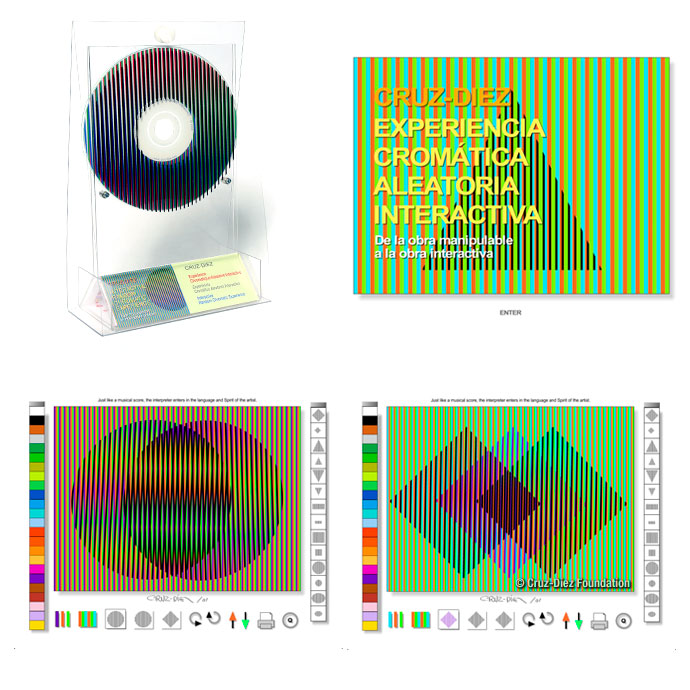I just stumbled upon the amazing Cruz-Diez foundation site. If I ever visit Houston I have to check this place out. My early assumptions about a connection between the kinetic / OP art movement from the late 1950s and the first experiments in computer art were finally proved through the “New Tendencies / Nuevas Tendencias” international movement. Cruz-Diez participated in some of the New Tendencies exhibitions in Zagreb, a melting pot for artists working with technology. I don’t think that there is somebody else that can understand the physical qualities of color as Cruz-Diez. His paintings produce visual effects as you walk through them. It an absolutely amazing experience. We find in his work, elements of interactivity, perception and science used for the purpose of creating amusing art. It is wonderful to think that the viewer doesn’t need to be an expert in art with MFA’s and/or PhD’s to understand this work.
Anyhow, The Cruz-Diez foundation has just launched an “app” called Interactive Random Chromatic Experience for iphone and ipad to create optical and colorful images in the style of Cruz-Diez. It is a new version of a 1995 CD-rom that I would love to have:
This project is a good demonstration of the research aspects present in Cruz-Diez work. In the computer screen, color is data and interacting with the software allows the user to manipulates the values of the program.
I’ve been toying with the idea of making an app that reconstructs “FIELDS,” the software created by Giorgini in 1975. Maybe this would be a good way of making his work accessible to the new generations?


This look super interesting and I will have to download it. Please do develop the app for FIELDS. It’s not just about accessibility (since it would be a different work when in a new medium), it would be an interesting aspect in the preservation of digital art.